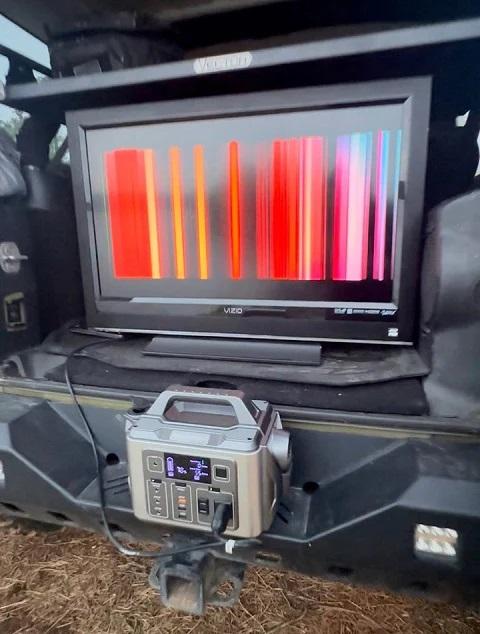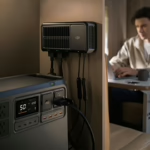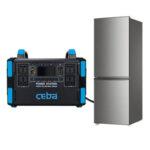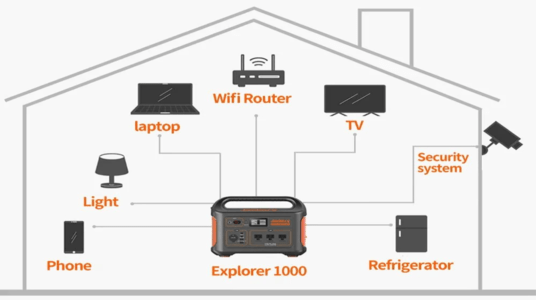The question at hand – “how long will a portable power station run a TV?” – requires understanding a few basic principles of electricity and energy usage. The answer is not a simple one-size-fits-all, as it relies on several factors, including the power capacity of the portable power station and the power consumption rate of the TV. In the following sections, we’ll delve into these factors, provide an illustrative example of the calculation involved, and offer practical advice on maximizing the runtime of a TV using a portable power station.
Factors Affecting the Runtime
Capacity of the Power Station
The capacity of a power station, typically expressed in watt-hours (Wh), is the total amount of energy it can store. A larger capacity means that the power station can supply power for a longer period. However, the actual runtime will depend on the amount of power drawn by the connected devices, in this case, the TV.
Power Consumption of the TV

Different models and sizes of TVs have varying power consumption rates, usually expressed in watts (W). Larger, high-resolution TVs tend to consume more power than smaller, lower-resolution ones. Therefore, the same power station will run a smaller, more energy-efficient TV longer than a larger, less efficient one.
Efficiency of the Power Station
No power station delivers 100% of its stored energy to the devices it powers. There are always some energy losses due to heat and the internal electronics of the power station. Generally, portable power stations have an efficiency rating of around 85-90%, meaning that only about 85-90% of the stored energy is available for use.
Basic Calculation and Assumptions
Explanation of How to Calculate Runtime
The basic formula to estimate the runtime is to divide the capacity of the power station by the power consumption of the TV. However, to account for the efficiency of the power station, you need to consider only the usable capacity (total capacity x efficiency rating). For example, if a power station has a capacity of 500Wh and an efficiency of 90%, the usable capacity is 450Wh. If the TV consumes 50W, the estimated runtime would be 450Wh / 50W = 9 hours.
Discussion of Assumptions Used in the Calculation
This calculation is a rough estimate and assumes that the TV is the only device drawing power from the station and that the TV’s power consumption is constant, which may not be the case if the brightness or volume changes. It also assumes the power station is fully charged and that its efficiency remains constant throughout discharge, which may not always be true, especially near the end of the battery’s life.
Understanding these factors and the assumptions involved in the calculation can give you a reasonable estimate of how long a portable power station can run a TV. However, keep in mind that real-world conditions may vary, so it’s always a good idea to have some margin for error or unexpected power needs.
Real-world Examples
Let’s consider a few examples to understand this better:
- A portable power station with a 1000Wh capacity and 90% efficiency (thus providing 900Wh of usable power) could power a TV that consumes 100W for approximately 9 hours.
- If the same power station were to power a more energy-efficient TV consuming only 50W, the runtime would effectively double to around 18 hours.
These examples underline how the specific power requirements of your TV significantly impact how long a power station can keep it running.
Ways to Maximize Runtime
Even with a high-capacity power station, it’s beneficial to maximize its runtime, especially when you’re relying on it for extended periods. Here are some tips to do that:
Efficient Use of Power: Be mindful of how you use your TV. Decreasing the brightness, reducing the volume, or turning off the TV when not in use can significantly decrease power consumption and increase the runtime.
Using Energy-Efficient TVs: Modern TVs, especially LED and OLED models, tend to be more energy-efficient than older LCD or CRT models. Investing in an energy-efficient TV can extend your power station’s runtime considerably.
Proper Maintenance of the Power Station: Taking good care of your power station can maintain its efficiency and prolong its overall lifespan. Regularly charging and discharging the station, keeping it at room temperature, and avoiding overloads can prevent unnecessary energy losses and keep it performing optimally.
- How to Install Solar Panels on Your RV Roof and Connect to a Battery: A Complete DIY Guide

- DJI Power 2000: Silent Strength in Portable Energy,Silent Power Unleashed

- DJI Power 1000 vs Competitors: Technical Deep Dive & Performance Benchmarking

- How a Portable Power Station can Keep Your Refrigerator Running During Power Outages

- Powering Your Home in Emergencies with a Portable Solar Generator

By understanding the factors affecting runtime and applying these strategies, you can maximize the utility of your portable power station, ensuring your TV stays powered for as long as possible.

